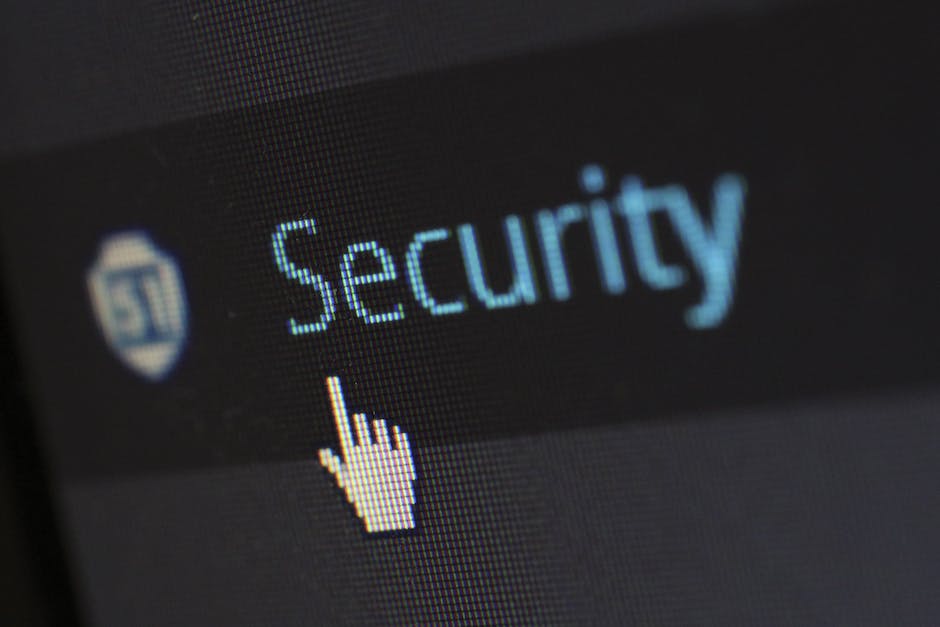Table of Contents
“Empowering Your Organization’s Digital Defense”
Introduction
“Cybersecurity Leadership: Protecting Your Organization in the Digital Age” is a comprehensive guide that focuses on the importance of effective leadership in safeguarding organizations against cyber threats. In today’s digital landscape, where cyber attacks are becoming increasingly sophisticated and prevalent, it is crucial for leaders to understand the risks and take proactive measures to protect their organizations. This book provides valuable insights, strategies, and best practices for cybersecurity leadership, empowering leaders to navigate the complex world of cybersecurity and ensure the safety and resilience of their organizations in the face of evolving threats.
The Importance of Cybersecurity Leadership in the Digital Age

The digital age has brought about numerous advancements and opportunities for organizations across the globe. With the rise of technology, businesses have been able to streamline their operations, reach a wider audience, and increase their productivity. However, along with these benefits comes the ever-present threat of cyberattacks. As organizations become more reliant on technology, the need for effective cybersecurity leadership becomes increasingly important.
In today’s digital landscape, cyberattacks have become more sophisticated and prevalent than ever before. Hackers are constantly finding new ways to exploit vulnerabilities in an organization’s systems and gain unauthorized access to sensitive information. The consequences of a successful cyberattack can be devastating, ranging from financial loss to reputational damage. Therefore, it is crucial for organizations to have strong cybersecurity leadership in place to protect their assets and mitigate the risks associated with cyber threats.
One of the primary responsibilities of cybersecurity leadership is to establish a robust cybersecurity strategy. This involves identifying potential risks and vulnerabilities, implementing appropriate security measures, and regularly monitoring and updating the organization’s security protocols. By taking a proactive approach to cybersecurity, organizations can significantly reduce the likelihood of a successful cyberattack.
In addition to developing a comprehensive cybersecurity strategy, effective cybersecurity leadership also involves creating a culture of security within the organization. This means educating employees about the importance of cybersecurity and providing them with the necessary training to identify and respond to potential threats. Employees should be encouraged to follow best practices when it comes to password management, data protection, and safe browsing habits. By fostering a culture of security, organizations can ensure that everyone within the organization is actively working towards protecting the organization’s digital assets.
Furthermore, cybersecurity leadership should also prioritize the establishment of strong partnerships and collaborations with external stakeholders. This includes working closely with IT professionals, cybersecurity experts, and law enforcement agencies to stay updated on the latest threats and trends in the cybersecurity landscape. By leveraging the expertise of these external partners, organizations can enhance their cybersecurity capabilities and stay one step ahead of potential attackers.
Another crucial aspect of cybersecurity leadership is the ability to effectively respond to and recover from a cyberattack. Despite the best preventive measures, no organization is completely immune to cyber threats. Therefore, it is essential for cybersecurity leaders to have a well-defined incident response plan in place. This plan should outline the steps to be taken in the event of a cyberattack, including the identification and containment of the breach, the restoration of systems and data, and the communication with stakeholders. By having a clear and well-rehearsed incident response plan, organizations can minimize the impact of a cyberattack and ensure a swift recovery.
In conclusion, cybersecurity leadership plays a vital role in protecting organizations in the digital age. With the increasing prevalence of cyber threats, organizations must have strong cybersecurity leadership in place to develop and implement effective security strategies, foster a culture of security, establish partnerships with external stakeholders, and respond to and recover from cyberattacks. By prioritizing cybersecurity leadership, organizations can safeguard their digital assets and maintain the trust and confidence of their stakeholders in an increasingly interconnected world.
Strategies for Building a Strong Cybersecurity Leadership Team
In today’s digital age, organizations face an ever-increasing threat of cyber attacks. As technology advances, so do the tactics of cyber criminals, making it crucial for organizations to have a strong cybersecurity leadership team in place. This team is responsible for developing and implementing strategies to protect the organization’s sensitive data and systems from potential breaches. In this section, we will explore some strategies for building a strong cybersecurity leadership team.
First and foremost, it is important to have a clear understanding of the skills and expertise required for effective cybersecurity leadership. This includes technical knowledge of cybersecurity principles and practices, as well as a deep understanding of the organization’s specific industry and its unique security challenges. Additionally, strong leadership and communication skills are essential for effectively managing and coordinating the efforts of the cybersecurity team.
One strategy for building a strong cybersecurity leadership team is to recruit individuals with diverse backgrounds and experiences. This can help bring a variety of perspectives and ideas to the table, which can be invaluable when it comes to developing innovative strategies for protecting the organization. For example, individuals with a background in law enforcement or military intelligence may bring a unique understanding of threat intelligence and incident response.
Another strategy is to invest in ongoing training and professional development for the cybersecurity leadership team. The field of cybersecurity is constantly evolving, with new threats and vulnerabilities emerging on a regular basis. By providing opportunities for continued learning, organizations can ensure that their cybersecurity leaders stay up-to-date with the latest trends and best practices. This can include attending industry conferences, participating in webinars and workshops, and pursuing relevant certifications.
Collaboration is also key to building a strong cybersecurity leadership team. Cybersecurity is not a one-person job; it requires a coordinated effort from individuals across the organization. By fostering a culture of collaboration and information sharing, organizations can ensure that their cybersecurity leaders have access to the resources and support they need to effectively protect the organization. This can include regular meetings and communication channels for sharing updates and discussing emerging threats.
Furthermore, organizations should consider establishing a clear reporting structure for the cybersecurity leadership team. This can help ensure that there is a designated point of contact for cybersecurity issues and that responsibilities are clearly defined. It can also help facilitate communication and coordination with other departments, such as IT and legal, who may play a role in responding to and mitigating cyber threats.
Lastly, organizations should prioritize diversity and inclusion when building their cybersecurity leadership team. Research has shown that diverse teams are more effective at problem-solving and decision-making. By including individuals from different backgrounds and perspectives, organizations can enhance their ability to identify and address potential vulnerabilities and threats.
In conclusion, building a strong cybersecurity leadership team is essential for protecting organizations in the digital age. By recruiting individuals with diverse backgrounds and experiences, investing in ongoing training and professional development, fostering collaboration, establishing a clear reporting structure, and prioritizing diversity and inclusion, organizations can ensure that their cybersecurity leaders have the skills, knowledge, and support they need to effectively protect the organization from cyber threats. With the right strategies in place, organizations can navigate the complex and ever-changing landscape of cybersecurity with confidence.
Effective Communication and Collaboration in Cybersecurity Leadership
Effective Communication and Collaboration in Cybersecurity Leadership
In today’s digital age, organizations face an ever-increasing threat of cyber attacks. As technology advances, so do the tactics of cybercriminals, making it crucial for organizations to have strong cybersecurity leadership in place. One key aspect of effective cybersecurity leadership is the ability to communicate and collaborate effectively within the organization.
Communication is essential in any leadership role, but it becomes even more critical in the realm of cybersecurity. Cyber threats can be complex and constantly evolving, requiring leaders to effectively communicate the risks and necessary precautions to their teams. This includes not only technical information but also the potential impact on the organization as a whole.
To effectively communicate cybersecurity risks, leaders must be able to translate technical jargon into language that is easily understood by all stakeholders. This means avoiding technical terms and acronyms that may be unfamiliar to those outside the cybersecurity field. Instead, leaders should focus on explaining the risks in simple, straightforward terms that everyone can grasp.
In addition to clear communication, collaboration is also vital in cybersecurity leadership. Cyber threats are not limited to a single department or team within an organization. They can affect every aspect of the business, from IT to finance to human resources. Therefore, it is crucial for cybersecurity leaders to collaborate with other departments to ensure a comprehensive approach to cybersecurity.
Collaboration requires building strong relationships with other leaders and teams within the organization. This can be achieved through regular meetings, sharing information, and seeking input from others. By involving different perspectives and expertise, cybersecurity leaders can develop a more robust and effective cybersecurity strategy.
Furthermore, collaboration extends beyond the organization itself. Cybersecurity leaders should also engage with external stakeholders, such as industry peers, government agencies, and cybersecurity experts. This allows for the sharing of best practices, information on emerging threats, and collaboration on joint initiatives to enhance cybersecurity.
To facilitate effective communication and collaboration, cybersecurity leaders should leverage technology tools and platforms. These tools can streamline communication, enable real-time collaboration, and provide a centralized repository for sharing information and resources. By utilizing these tools, leaders can ensure that information is readily accessible to all stakeholders and that collaboration is seamless.
In conclusion, effective communication and collaboration are essential components of cybersecurity leadership. Leaders must be able to communicate cybersecurity risks in a clear and understandable manner, avoiding technical jargon and acronyms. They should also collaborate with other departments and external stakeholders to develop a comprehensive cybersecurity strategy. By leveraging technology tools and platforms, leaders can facilitate communication and collaboration, ensuring that the organization is well-prepared to protect itself in the digital age. With strong cybersecurity leadership in place, organizations can mitigate the risks of cyber attacks and safeguard their valuable assets.
Implementing Proactive Measures to Safeguard Your Organization’s Digital Assets
Implementing Proactive Measures to Safeguard Your Organization’s Digital Assets
In today’s digital age, organizations face an ever-increasing threat of cyberattacks. As technology advances, so do the tactics used by cybercriminals to breach security systems and gain unauthorized access to sensitive information. It is crucial for organizations to take proactive measures to safeguard their digital assets and protect themselves from potential cyber threats.
One of the first steps in implementing proactive cybersecurity measures is to conduct a thorough risk assessment. This involves identifying potential vulnerabilities in the organization’s systems and networks and evaluating the potential impact of a cyberattack. By understanding the specific risks faced by the organization, leaders can develop a targeted cybersecurity strategy that addresses these vulnerabilities and mitigates potential threats.
Once the risks have been identified, it is important to establish a robust cybersecurity framework. This framework should include policies and procedures that outline how the organization will protect its digital assets and respond to potential cyber incidents. It should also include guidelines for employee training and awareness programs to ensure that all staff members are knowledgeable about cybersecurity best practices.
A key component of any cybersecurity framework is the implementation of strong access controls. This involves limiting access to sensitive information and systems to only those individuals who require it to perform their job duties. By implementing strict access controls, organizations can reduce the risk of unauthorized access and minimize the potential damage caused by a cyberattack.
Another important proactive measure is the regular monitoring and updating of security systems. Cyber threats are constantly evolving, and organizations must stay one step ahead by regularly updating their security systems to protect against the latest threats. This includes installing software patches and updates, as well as regularly monitoring network traffic for any signs of suspicious activity.
In addition to technical measures, organizations must also focus on creating a culture of cybersecurity within their workforce. This involves promoting a sense of responsibility and accountability among employees when it comes to protecting digital assets. Regular training and awareness programs can help employees understand the importance of cybersecurity and teach them how to identify and report potential threats.
Furthermore, organizations should consider partnering with external cybersecurity experts to conduct regular audits and assessments. These experts can provide an objective evaluation of the organization’s cybersecurity measures and identify any areas that may require improvement. By seeking external expertise, organizations can ensure that they are implementing the most effective cybersecurity measures and staying up to date with the latest industry standards.
In conclusion, implementing proactive measures to safeguard an organization’s digital assets is crucial in today’s digital age. By conducting a thorough risk assessment, establishing a robust cybersecurity framework, implementing strong access controls, regularly monitoring and updating security systems, creating a culture of cybersecurity, and seeking external expertise, organizations can significantly reduce the risk of cyberattacks and protect themselves from potential threats. It is essential for organizations to prioritize cybersecurity leadership and take proactive steps to ensure the security of their digital assets.
Q&A
1. What is “Cybersecurity Leadership: Protecting Your Organization in the Digital Age” about?
“Cybersecurity Leadership: Protecting Your Organization in the Digital Age” is a book or resource that focuses on strategies and practices for effectively protecting organizations from cyber threats in the modern digital era.
2. Who is the author of “Cybersecurity Leadership: Protecting Your Organization in the Digital Age”?
The author of “Cybersecurity Leadership: Protecting Your Organization in the Digital Age” is a specific individual or group who has expertise in cybersecurity leadership.
3. What are some key topics covered in “Cybersecurity Leadership: Protecting Your Organization in the Digital Age”?
Some key topics covered in “Cybersecurity Leadership: Protecting Your Organization in the Digital Age” may include risk assessment, incident response, security governance, employee awareness, and emerging cyber threats.
4. Who is the target audience for “Cybersecurity Leadership: Protecting Your Organization in the Digital Age”?
The target audience for “Cybersecurity Leadership: Protecting Your Organization in the Digital Age” is likely professionals in leadership positions within organizations who are responsible for cybersecurity and protecting their organization’s digital assets.
Conclusion
In conclusion, “Cybersecurity Leadership: Protecting Your Organization in the Digital Age” is a crucial resource for organizations aiming to safeguard their digital assets. The book provides valuable insights into the evolving landscape of cybersecurity and offers practical strategies for effective leadership in this domain. By emphasizing the importance of proactive measures, risk assessment, and employee awareness, the book equips leaders with the knowledge and tools necessary to protect their organizations from cyber threats in today’s digital era.




